The 4 Rs of people-first culture
Respect. Responsibility. Relationships. Results. Here are the principles and characteristics that make a workplace people-first.
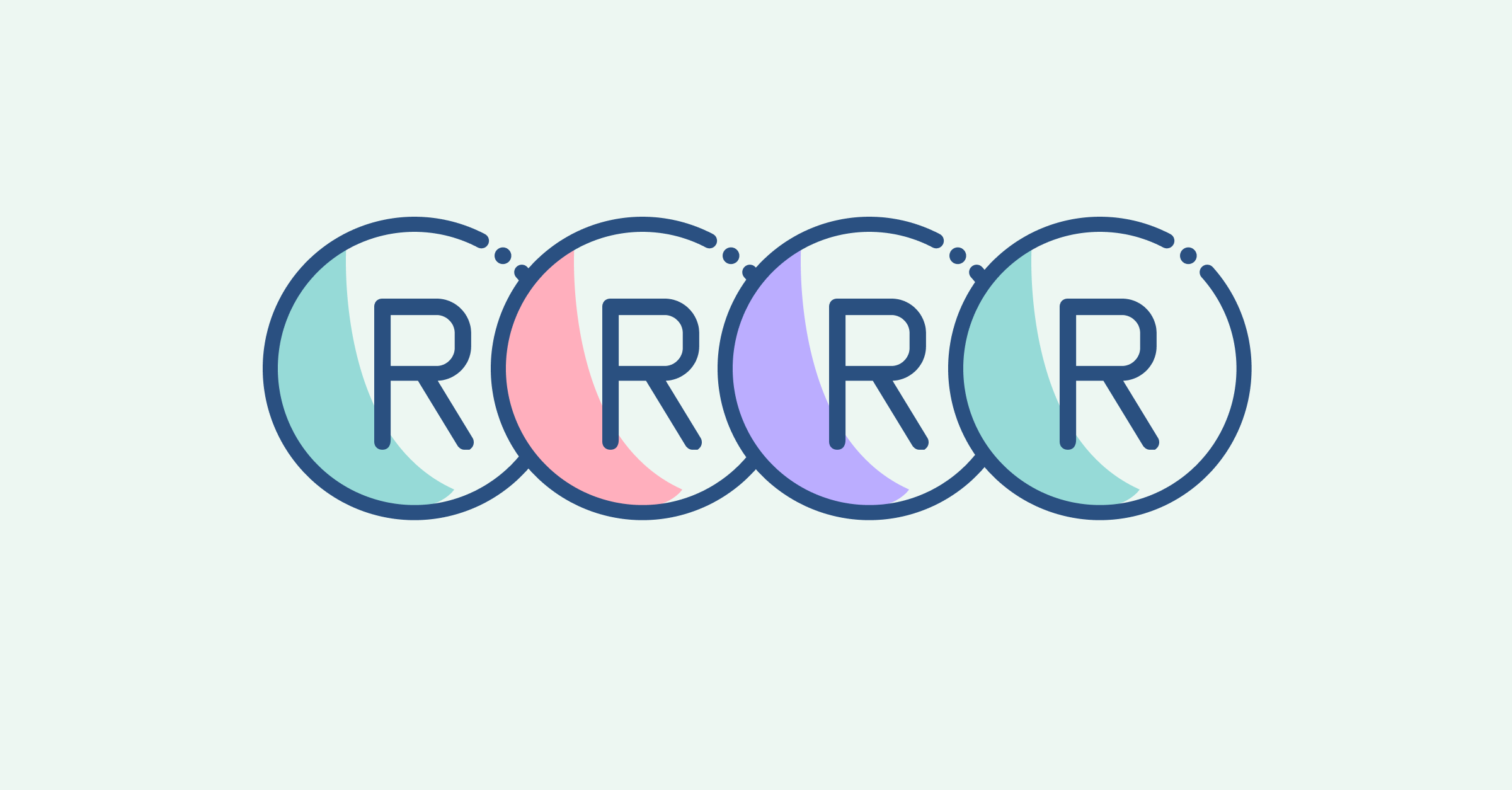
Building a people-first culture at work means being intentional about creating spaces where team members can feel supported and valued while doing fulfilling, meaningful work.
We believe that businesses exist to serve humans, and we started People-First Jobs to put the spotlight on companies that meet the criteria that we believe characterize people-first businesses.
These are companies that put people first by having reasonable hours, flexible schedules, and remote work options; that enable deep work through async communication; that value a diverse and inclusive team; and that focus on outcomes and professional development. They don’t have to check all the boxes on our list, though we look for as many as possible.
But these principles and criteria are still a bit abstract. How do they translate into the kind of workplace or work culture that puts people first, where people can thrive and do their best work? What does such a workplace look like in more concrete terms? How can companies create and cultivate a working environment where people feel empowered and fulfilled?
What makes a workplace people-first?
I’ve thought about these questions a lot while surveying and talking to job-seekers. Here are some of the things I’ve learned through my research and one-on-one conversations:
- People want to work for companies that care for their employees, invest in their team, and support and empower team members to succeed.
- They want balance and flexibility—a humane workload that allows enough personal and family time, and the ability to choose when and where to work.
- They want clarity and transparency—about job responsibilities and how success is measured; about salary and benefits; about the team culture and how the team works together; and about how decisions are made.
- They want to do work that is important and meaningful, and be allowed the autonomy to take full ownership of the work they were hired to do.
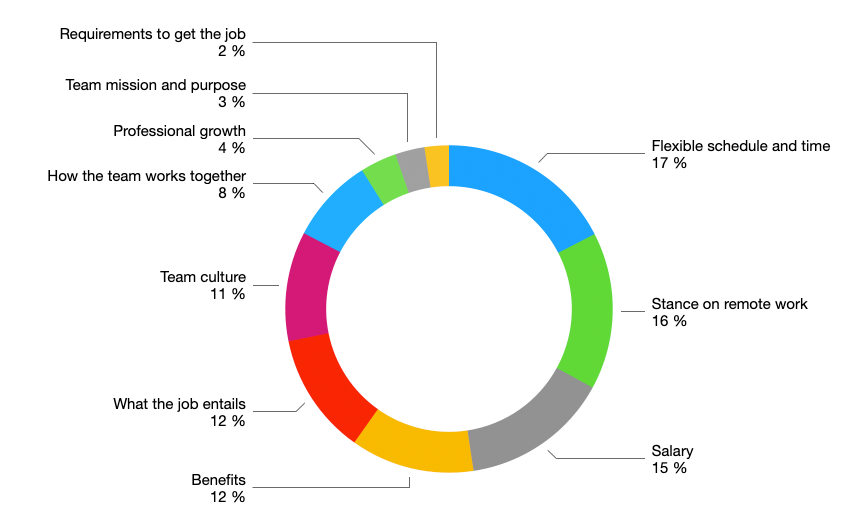
I’ve also reflected on my own experiences of having worked in various kinds of work environments, ranging from a large corporation to a bootstrapped SaaS company to running my own business. (In my early twenties, I even drove a truck!) Each of those workplaces had some positives and some negatives; in some work environments I felt energized, whereas in others I felt drained. But all of those experiences helped me come away with a better understanding of what makes a great workplace—one where you feel engaged, empowered, and fulfilled.
So, what makes a workplace people-first? I’ve identified a set of key characteristics based on my research for PFJ and my personal reflections. I’ve grouped these characteristics into four categories: respect, responsibility, relationships, and results.
The four Rs of a people-first workplace
1. Respect
A people-first workplace respects the value of people’s labor, the need for uninterrupted time to focus, and each team member’s desire to structure their work in a way that suits them. Respect is crucial for creating a work environment where people feel safe, supported, and valued, which in turn promotes job satisfaction and well-being, and enables people to perform at their best.
- Fair wages and reasonable hours. A people-first company offers fair wages and sets reasonable hours, recognizing that more hours do not equal better results. When people are adequately compensated and have enough time for family and leisure pursuits, they can show up at work well rested, energized, and motivated.
- Deep work. Creating the space to focus without interruption makes it possible for people to buckle down and do meaningful, productive work—or ‘deep work,’ as Cal Newport calls it. This means respecting people’s time and attention by minimizing meetings and other distractions.
Deep work is the work we hire people to do; the specializations and expertise that define careers and help businesses grow. Deep work is what a writer does when they write or an artist does when they paint or, in the software world, what a developer does when they write code.”
—Natalie Nagele, CEO at Wildbit
- Inclusive policies and processes. A people-first team works in a way that makes it possible for everyone to participate fully. This might mean flexible hours or remote work, or prioritizing asynchronous communication so that people can respond when it’s most convenient for them. It might mean having robust family leave policies, inclusive hiring practices, and so on.
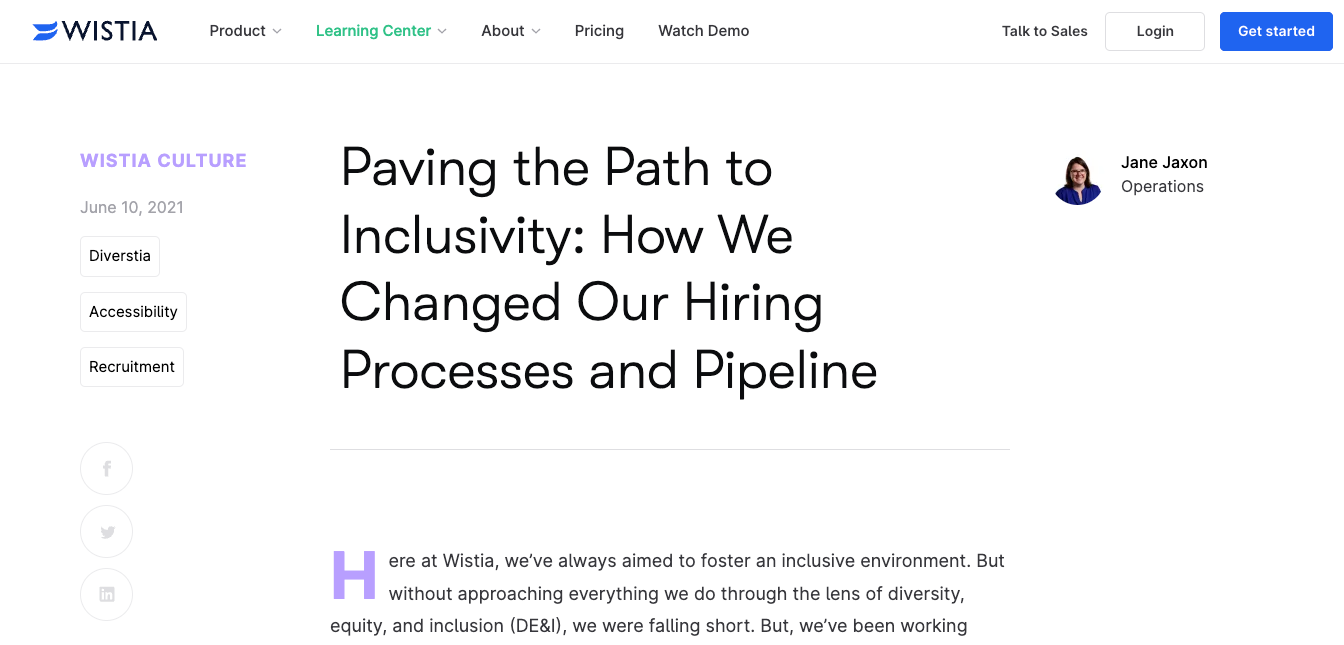
The folks at Wistia share how they’ve made their hiring process and pipeline more inclusive
2. Responsibility
Team members want to feel like their contribution matters, so they can take pride in accomplishing the work they are responsible for and entrusted with. Conversely, being micromanaged by someone else can be utterly demotivating. A people-centric team allows people the autonomy and independence to do what they were hired to do, take ownership of their projects, and then reflect on their work in order to improve over time.
- Autonomy and independence. Letting people work independently means the company trusts them to do the work they were hired to do. It might mean giving them the freedom to choose their own hours, or work in whatever way makes sense to them—and trusting that they’ll get the work done.
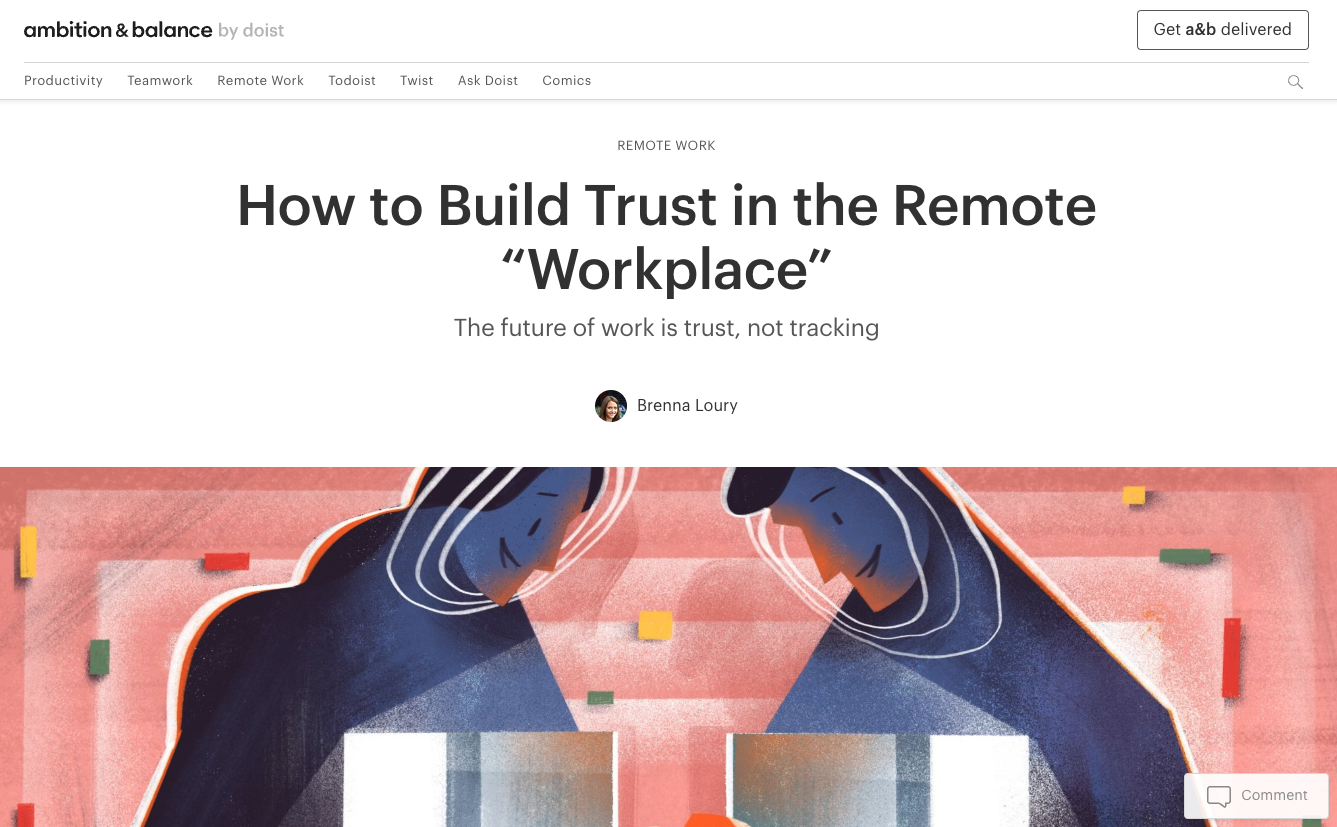
- Ownership of one’s work. People are more likely to feel excited and energized at work if they can take charge of a project, make decisions about it, and take pride in its execution. Being able to take ownership makes the work meaningful and fulfilling.
“In the company we aspire to build, managers should not have to be involved in every decision and become bottlenecks, and team members should feel confident in their own expertise and ownership to push the company forward.”
—Åsa Nyström, VP of Customer Advocacy at Buffer
- Time for reflection. A company that invests in its people should allow them the time and space to reflect on their work. This allows people to not just iterate and improve, but also to think about why and how they do the work they do, and what it means to them.
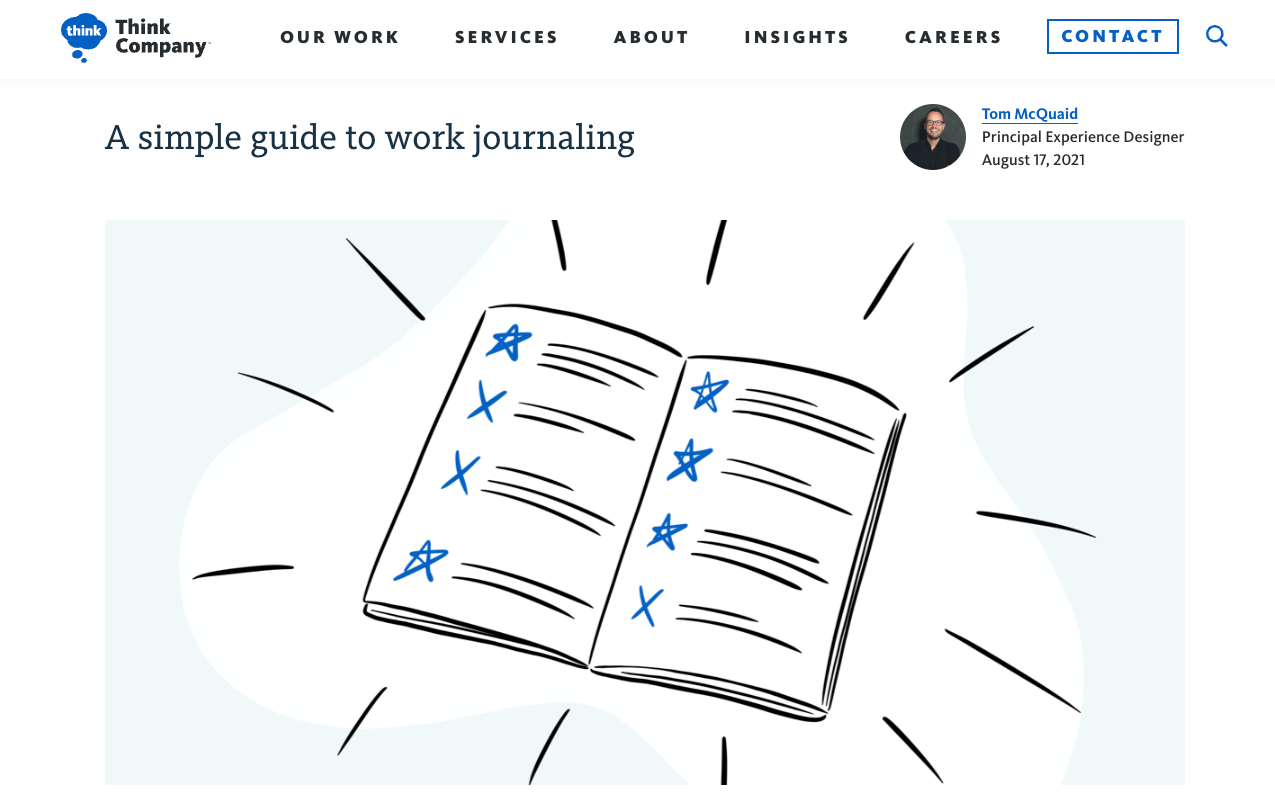
The Think team share some of the benefits of keeping a work journal
3. Relationships
If a company puts people first, it follows that it values and cultivates strong relationships—which extends to all the people impacted by the company and its culture: not just the team, but also the customers and the larger community. A people-centric company cares deeply about the wellbeing of its team, the success of its customers, and the impact it has on the surrounding communities and the world at large.
- A strong team culture. A people-first workplace works hard to cultivate a team culture that is diverse and inclusive, and prioritizes the needs of team members and their families. It provides the space and opportunity for people to interact and bond with teammates, and is transparent in its operations and decision-making.
“At Wildbit, we’ve found that people are happiest when they’re given a chance to do the work they love, on projects they believe in, with people they care about.”
—Natalie Nagele, CEO at Wildbit
- Caring for your customers. A business depends on its customers in order to be profitable, but it should, in turn, be genuinely invested in their success rather than viewing them as a resource to be exploited. It’s a two-way relationship: the success of your customers will ensure the success of your business.
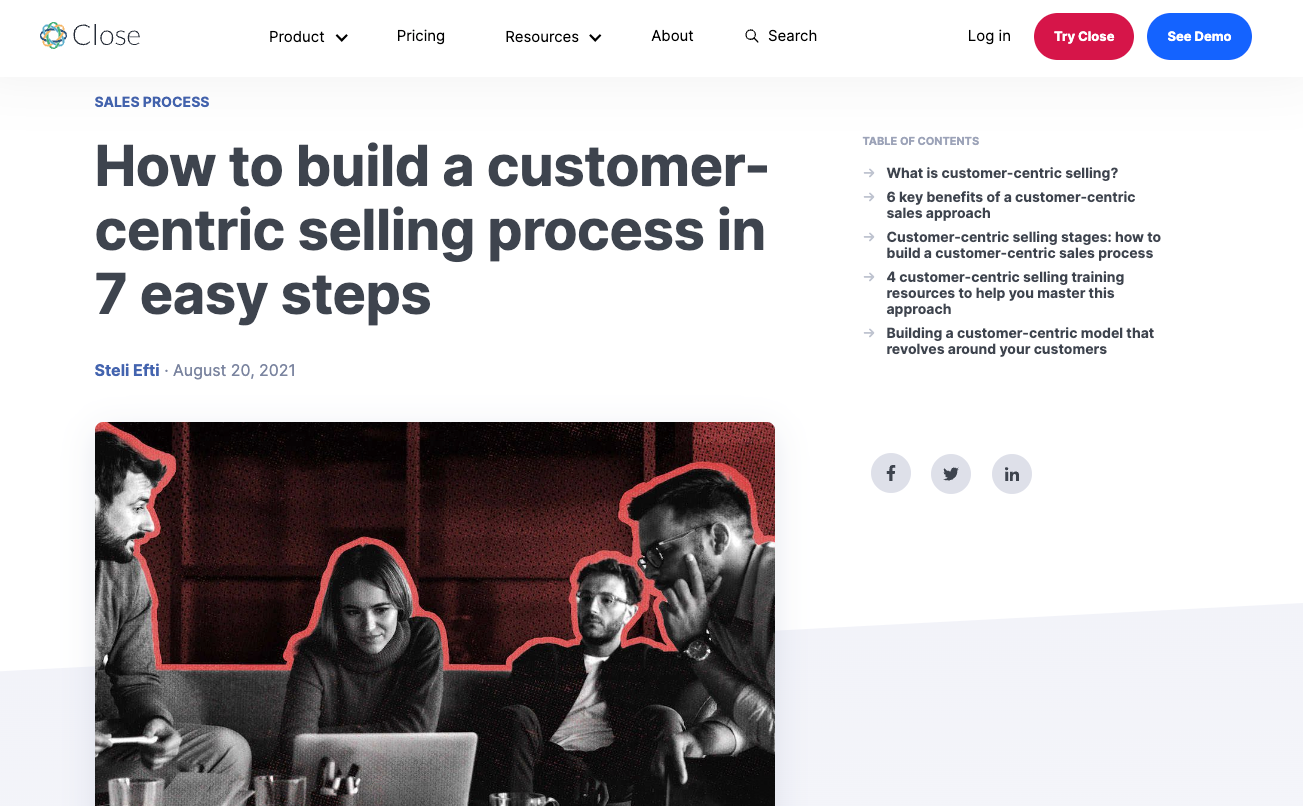
The Close team on caring about solving customer problems and not just closing deals
- Caring for the community. From an ethical standpoint, it’s important to think about the impact a business has on the surrounding community, on society, and on the environment. Ideally, a company should strive to have a positive impact rather than a negative one.
“True impact is external. It happens in our families, in our communities, in the environment around us. We’ve found that having a positive, lasting impact requires a bigger-picture mentality that looks beyond the confines of Wildbit as a company and examines our place within these social structures.”
—Natalie Nagele, CEO at Wildbit
4. Results
Any workplace rightly cares about the results they produce—but financial goals such as revenue and profit are only one piece of the puzzle. People-first companies recognize that how we work is just as important and meaningful as the work itself, so they go beyond traditional metrics and put emphasis on the process and how the work is done.
- Regular reviews. A people-focused team helps team members define individual goals and takes the time to review progress and provide feedback in a way that is supportive and empowering. When goals are not met, team members work to understand why, and how things can improve.
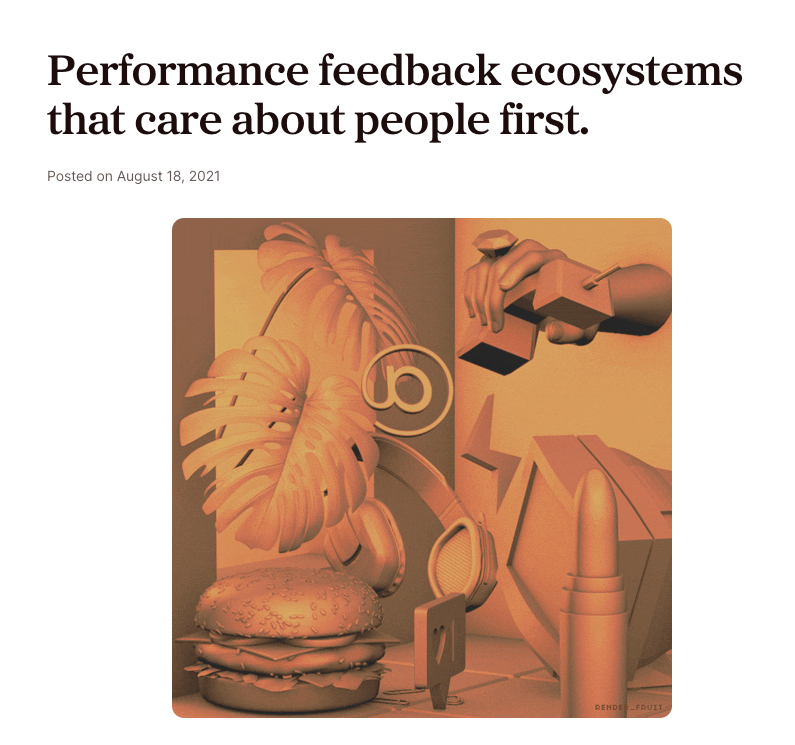
Our friends at Alley put a people-first perspective on performance reviews
- Learning and development. Investing in the team means creating opportunities for people to hone their craft, learn new skills, and pursue opportunities for professional development so that they can be the best version of themselves.
- Mentorship. A big part of helping people grow in their roles and meet their goals is providing mentorship. Team leaders and senior members can help their junior colleagues to better understand the industry and think about their career path.
“We put a lot of effort into our one-to-ones. We try to make them not about status, not about a project, [but] about who are you as a person. What do you value right now? Why are you here at work, like what is motivating you? What is challenging you?”
—Katie Womersley, VP of Engineering at Buffer
Putting people first is a long-term commitment
Anyone who has suffered through a toxic work culture can attest to the importance of a work environment where people can flourish and reach their full potential. But creating and cultivating a people-first culture in the workplace takes a lot of conscious effort: people-first leadership is a long-term commitment that requires openness, transparency, and a willingness to learn from one’s mistakes.
We want to support founders and leaders to build and grow people-first businesses, so if you're curious to learn more about how other people-first leaders create workplaces that keep their teams happy and healthy, make sure you sign up to receive our newsletter. And if you’re a people-first company, consider becoming a PFJ member so that our growing community of job-seekers can connect with you.
Let’s work together to build a more human and sustainable future of work.
